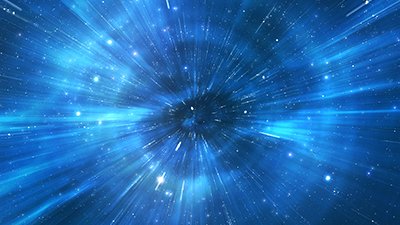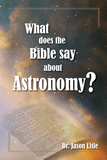A Nobel Notion?
The big bang model still does not answer the fundamental questions of where the original matter came from or what caused it to begin expanding.
On October 3, 2006, two Americans won the Nobel Prize in physics. What did they do to earn such a prestigious award? Scientists John Mather and George Smoot “did work that helped cement the big-bang theory of the universe and deepen understanding of the origin of galaxies and stars” (Associated Press).
Drs. Smoot and Mather’s work was based on measurements done with the help of NASA’s COBE satellite, which was launched in 1989. They were allegedly able to observe the universe in its early stages—about 380,000 years after it was (allegedly) “born.” It’s unfortunate that Drs. Smoot and Mather received a Nobel Prize for supporting the big bang model when evidence has been mounting that contradicts it (see Get Answers: Astronomy). For example, astronomers and physicists still have no observational evidence for how stars and galaxies form. Abraham Loeb of the Harvard Center for Astrophysics puts it this way:
“The truth is that we don’t understand star formation at a fundamental level.”1
The best explanation is found in Genesis 1. God made the stars on Day 4. See Were Stars Created?
The big bang model still does not answer the fundamental questions of where the original matter came from or what caused it to begin expanding. There are many additional problems with the model that are seldom addressed in educational textbooks or by the news media—see What are some of the problems with the big bang hypothesis? for details.
Finally, there is new data regarding cosmic microwave background (CMB) radiation that contradicts conclusions Drs. Smoot and Mather made in their Nobel Prize-winning research.
University of Alabama at Huntsville scientists are scratching their heads at a finding that may see the big bang “blown away” in the minds of scientists. Big bang advocates believe the cosmic explosion is responsible for the cosmic microwave background (CMB) radiation we observe. However, scientists have long predicted that galaxy clusters in the universe would deflect the CMB radiation, creating “shadows” in the observable radiation. But when the Alabama scientists measured this effect, they did not find any strong “shadows” as expected.
This indicates that the CMB radiation may not be “behind” distant galaxies, but much closer instead. Since the big bang interpretation requires the CMB radiation to be behind the farthest galaxies, this new discovery is a devastating blow to the big bang model, and indicates that the CMB radiation cannot be leftover radiation from a big bang.2
Footnotes
- Marcus Chown, “Let There Be Light,” New Scientist, Feb 7, 1998.
- “News to Note,” Answers in Genesis, September 9, 2006, item 1.
Recommended Resources

Answers in Genesis is an apologetics ministry, dedicated to helping Christians defend their faith and proclaim the good news of Jesus Christ.
- Customer Service 800.778.3390
- Available Monday–Friday | 9 AM–5 PM ET
- © 2026 Answers in Genesis




